Some years ago myself and sons Matt and Jacob had a visit in heavy rain to Bolton Abbey and Strid wood, here is a little something about it.
Bolton Abbey
On the banks of the River Wharfe in the heart of the beautiful Yorkshire Dales lays Bolton Abbey. Over 80 miles of footpaths are in just less than 30,000 acres of this gorgeous countryside. This landscape is full of history and myth, the Priory, riverside, woodland, and moorland with there paths. Cafes and tea rooms are for all to enjoy, as is a picnic while relaxing beside the river, so many nice quiet roads are also great to cycle on, the Ilkley cycling club can vouch for that, though low gears are best advice, before resting up at the Cavendish Pavillion.
The monastery
1120 was the original year it was founded, and at Embsay! In spite of its name, Bolton Abbey was a priory due to being led by a prior. In 1154 and on the banks of the River Wharfe the Augustinian order founded the now known site. In this year Lady Alice de Romille of Skipton Castle give the Bolton Abbey land to the order. Scottish raiders caused the temporary abandonment of the site in the early 14th century, and serious structural damage was inflicted to the priory.
The nave of the abbey church was in use as a parish church from around 1170. Surviving the Dissolution of the Monasteries in 1539 resulted in the termination of the priory while building work was still continuing. In 1520 a tower had begun being built, this was left half-standing, converted into an entrance porch its base was later given a bell-turret. On the east side it remains in ruins. Gothic style of architecture is most of the remaining church, with more work done in the Victorian times, August Pugin windows included.
Bolton Abbey Estate
The 11th Duke of Devonshire turned it over to the Chatsworth Settlement Trustees to steward; until this trust was set up, the Dukes of Devonshire owned Bolton Abbey estate.
Five areas designated as Sites of Special Scientific Interest include ancient mainly oak woodland, known as the Strid this contains the River Wharfe.
Popular culture and Bolton Abbey
In 1981 The Cure released Faith, on it a blurred photo of the Abbey is on the cover. Artists that have grasped Bolton Abbey include Edwin Landseer and J. M. W. Turner whose work, Bolton Abbey, Yorkshire (1809), is held at theBritishMuseum. The White Doe of Rylstone by William Wordsworth’s was inspired by a visit to Bolton Abbey in 1807. Bolton Abbey is visited in episode 6 of the BBC series The Trip. Filmed at Bolton Abbey in 1985 a music video for the Love and Rockets song ‘If There’s A Heaven Above’
The Strid
Over hundreds of thousands of years billions of gallons of water have gradually eroded the rocky bed of the river; the water action has gorged out a deep channel through which the waters of the river Wharfe are squeezed at an incredible force.
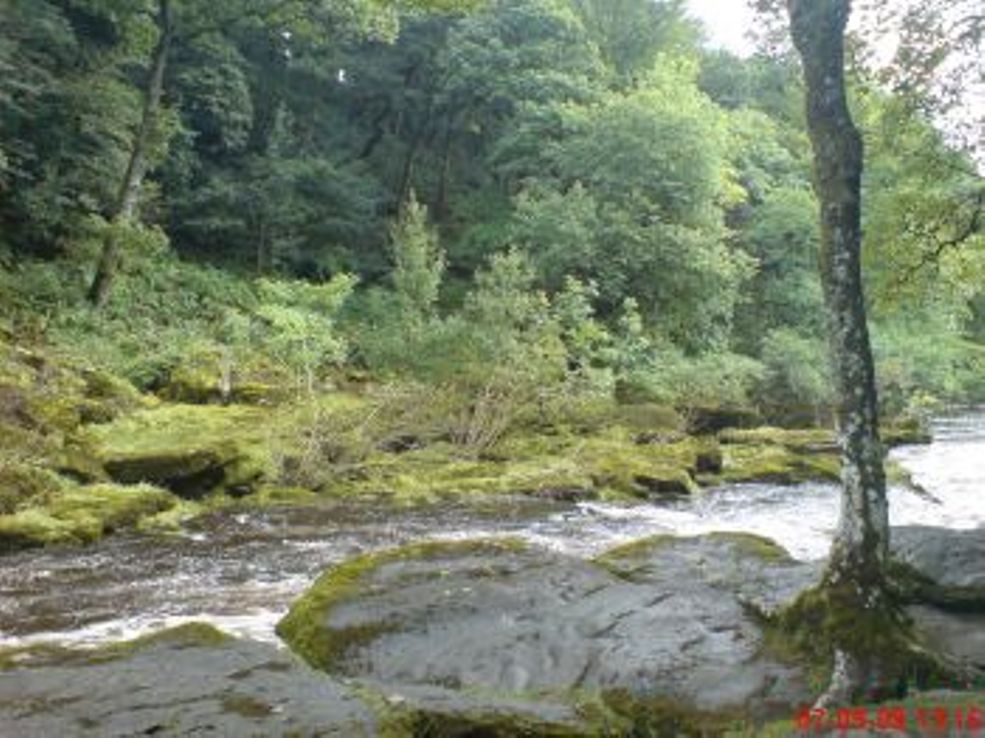 The gorge is 30 feet deep here, full of hissing water and immensely powerful under currents, the danger might not be obvious on a summer’s day.
The gorge is 30 feet deep here, full of hissing water and immensely powerful under currents, the danger might not be obvious on a summer’s day.
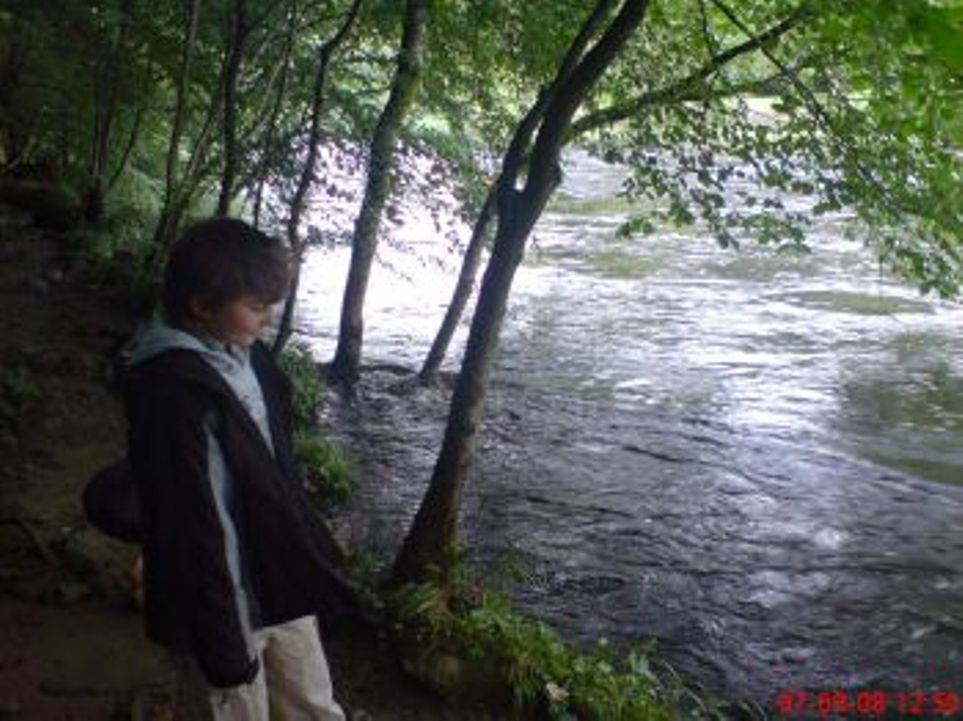 750 feet upstream of the strid the river Wharfe is around 80 feet wide, this narrows to about 20 feet at the start of the strid, a series of deceptive waterfalls follow.
750 feet upstream of the strid the river Wharfe is around 80 feet wide, this narrows to about 20 feet at the start of the strid, a series of deceptive waterfalls follow.
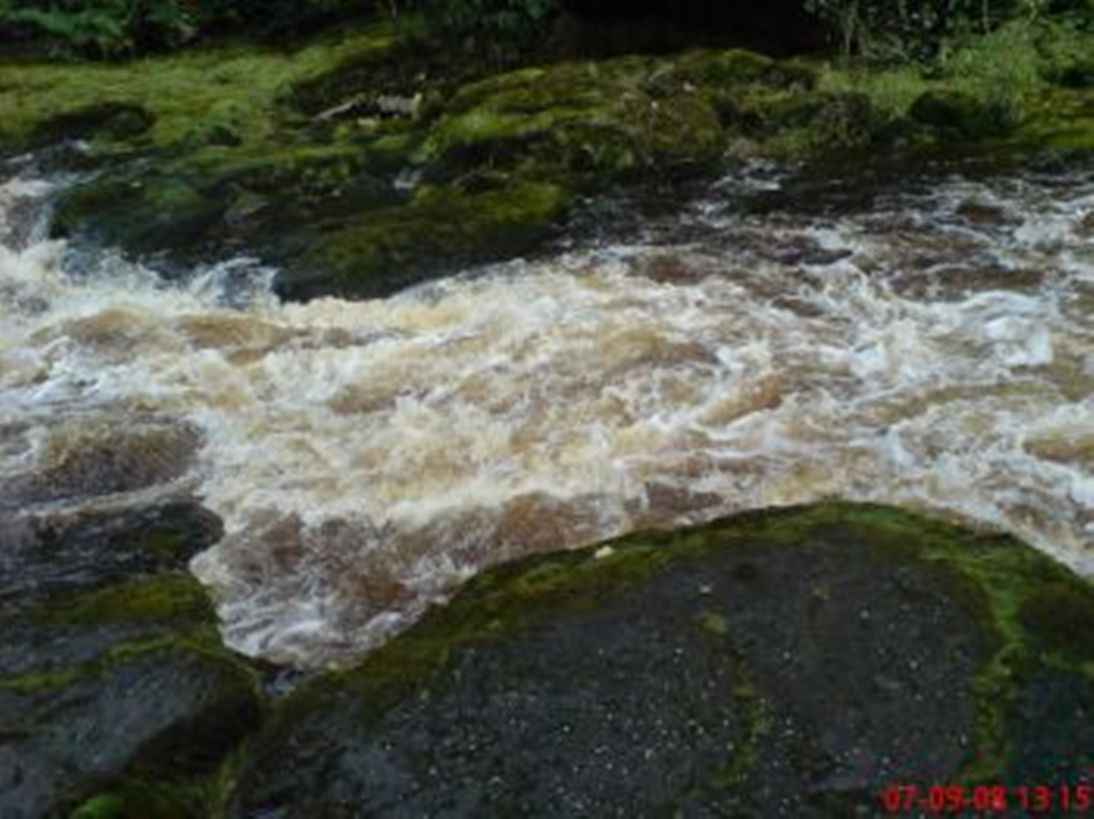 As can be viewed with the photos, after rain it becomes a torrent of danger, the river looks calm in dry weather but lives have been lost.
As can be viewed with the photos, after rain it becomes a torrent of danger, the river looks calm in dry weather but lives have been lost.
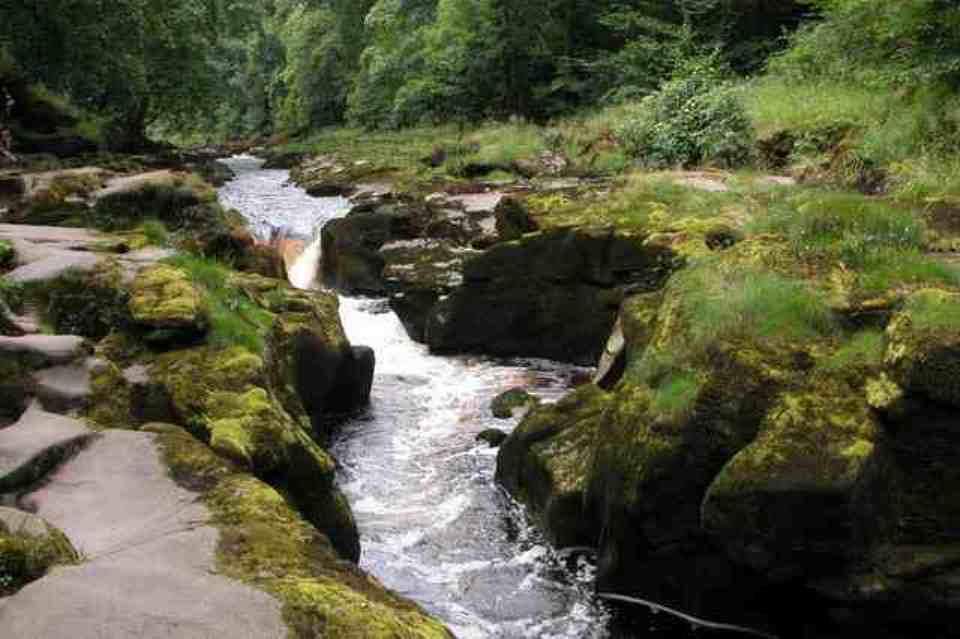 With this appearance of calm folks try jumping the narrowest points, these rocks are sloped and have moss, to jump and land usually results in a slide into the torrent, a grappling hook is nearby by in case of emergencies…
With this appearance of calm folks try jumping the narrowest points, these rocks are sloped and have moss, to jump and land usually results in a slide into the torrent, a grappling hook is nearby by in case of emergencies…
In the river by lud stream islands you can see where the layers of hard rocks have been folded by earth movements, the rocks here are millstone grit – a coarse sandstone 325 million years old.
The tree of coins
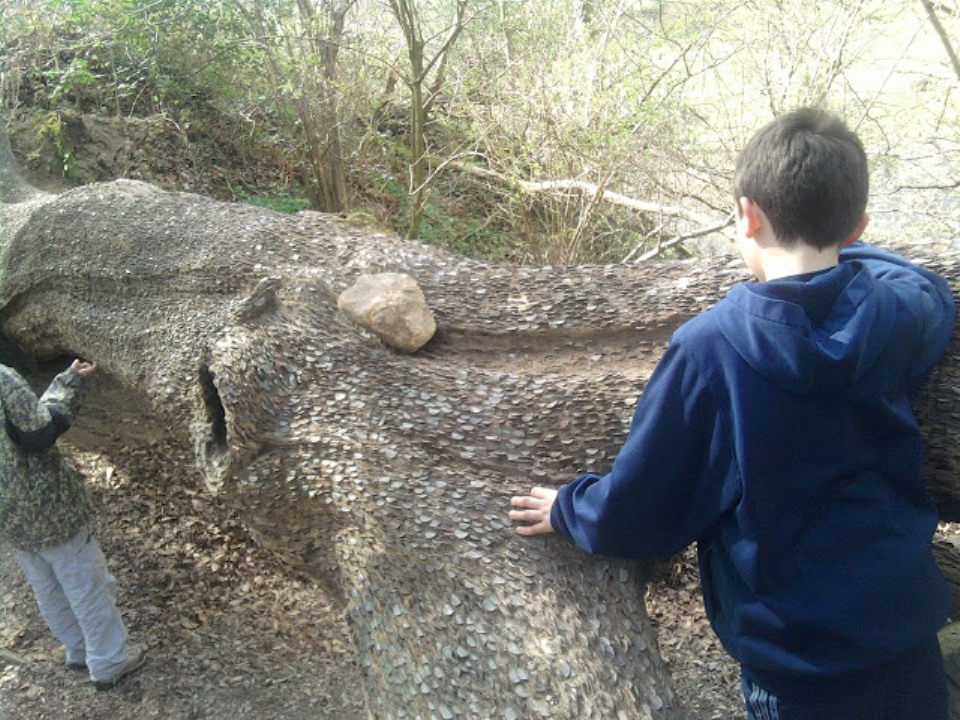 I just wonder when the first coins were ‘hammered’ into the tree, yes we also joined in the history.
I just wonder when the first coins were ‘hammered’ into the tree, yes we also joined in the history.
Bolton Abbey station
After being closed down through the Beeching cuts in 1965, Bolton Abbey station was reopened in 1998. It is about one and a half miles from Bolton Priory. The Embsay & Bolton Abbey Steam Railway now have plans to extend the railway back to Addingham, no given date as yet but this will be terrific!
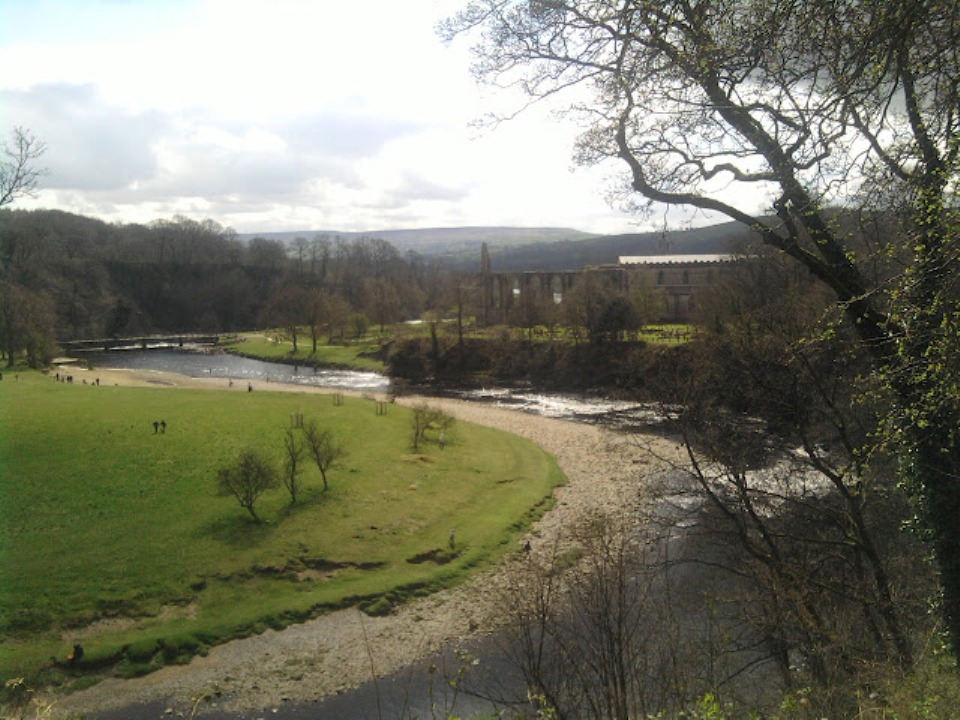
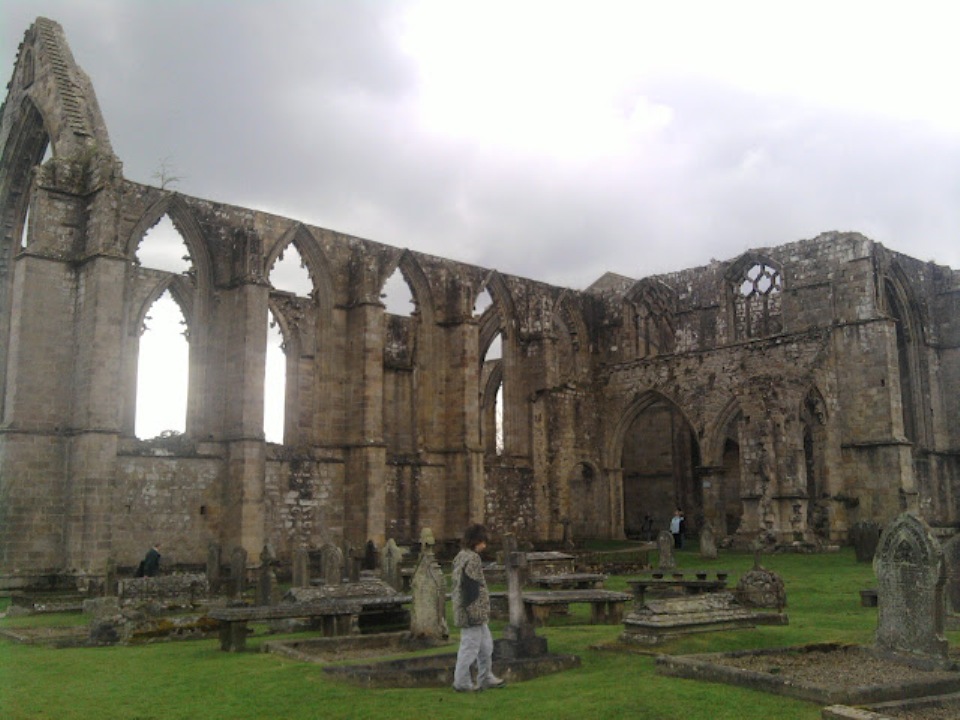
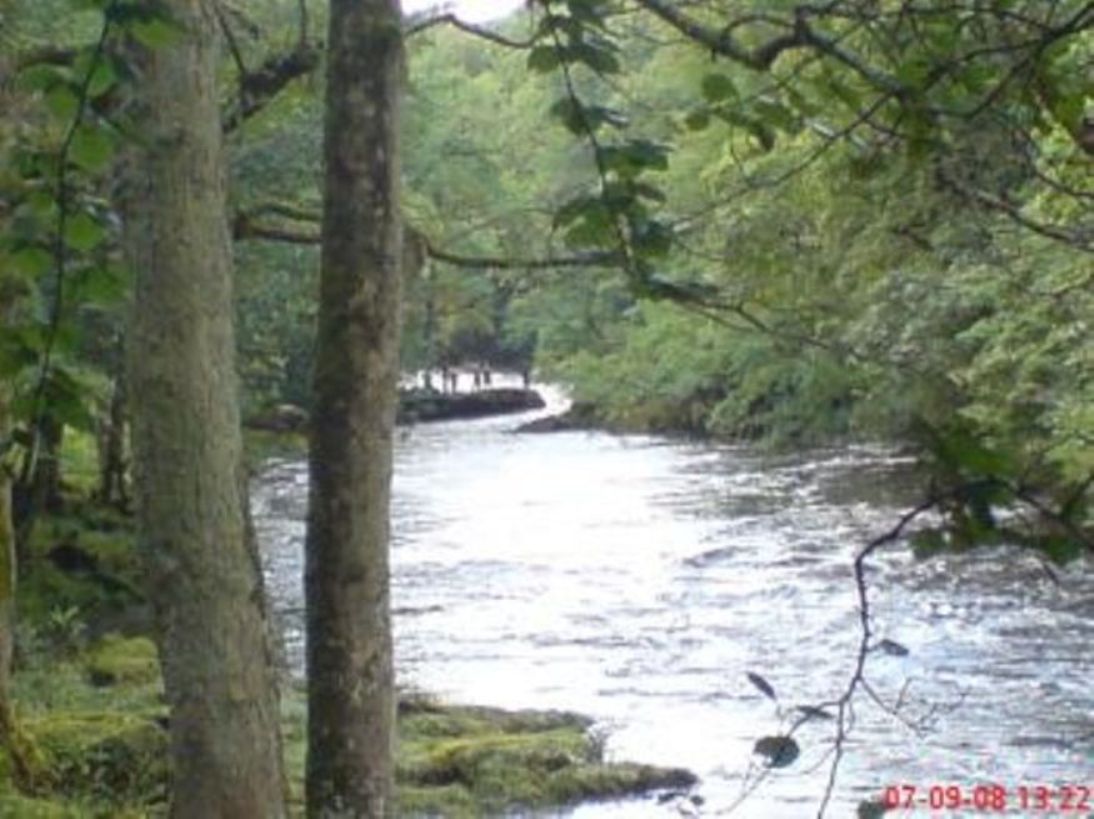
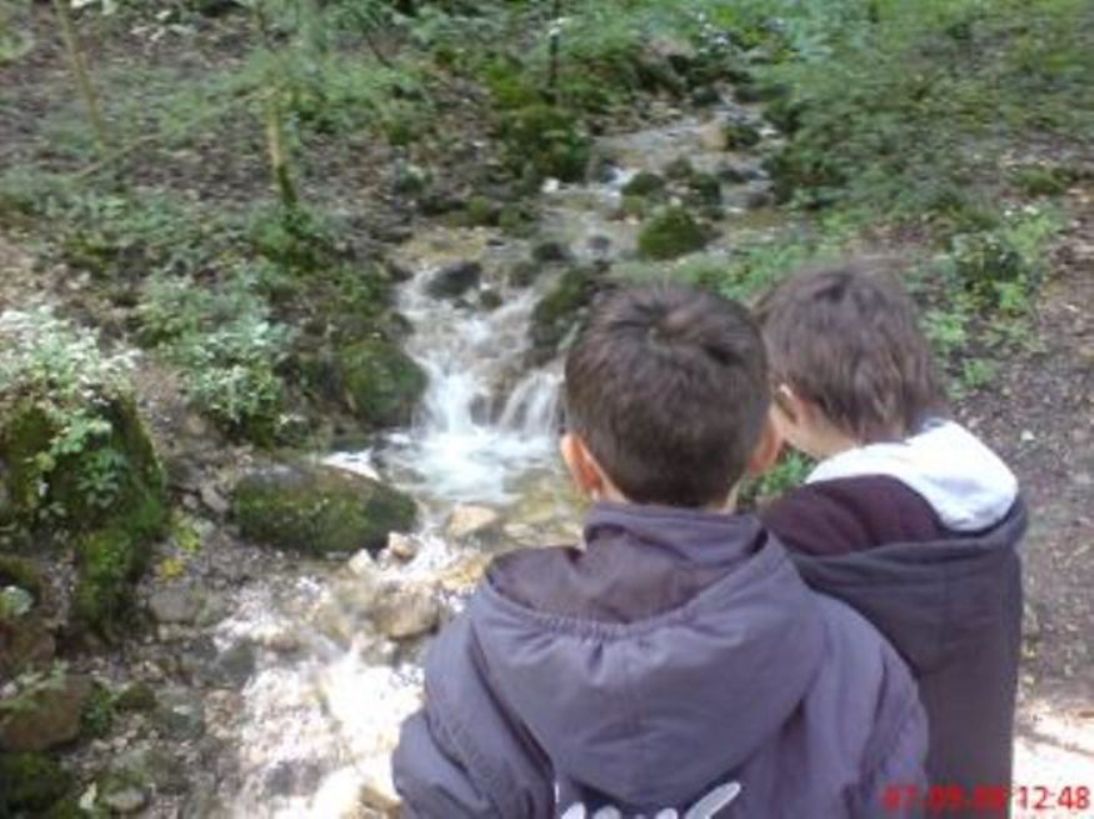
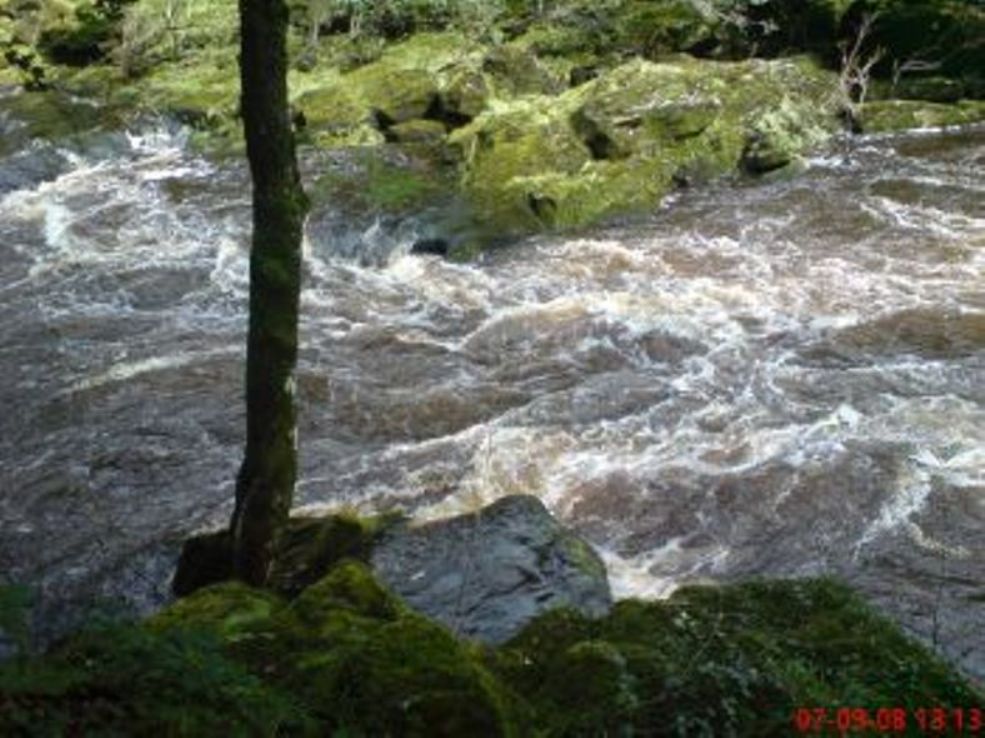
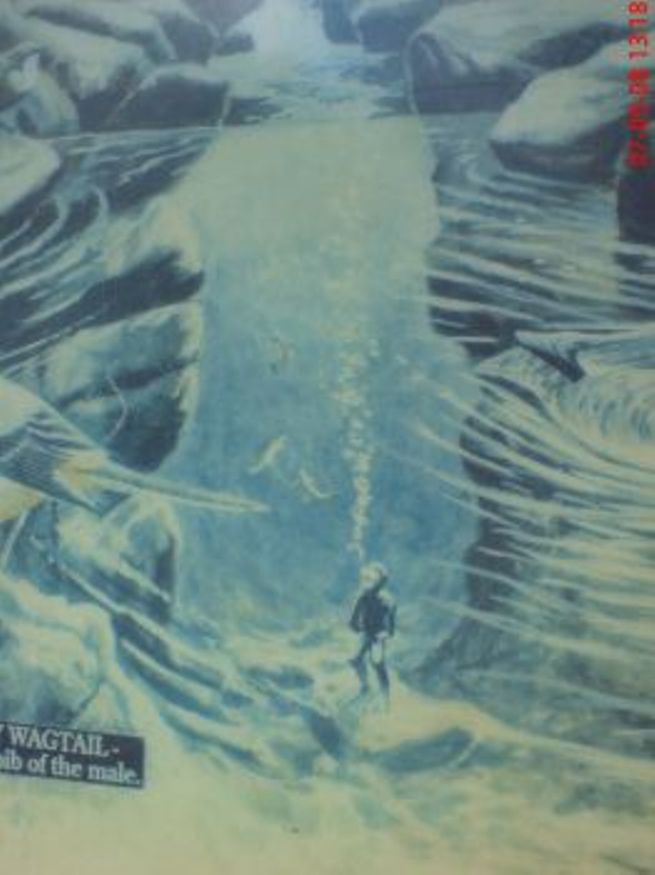
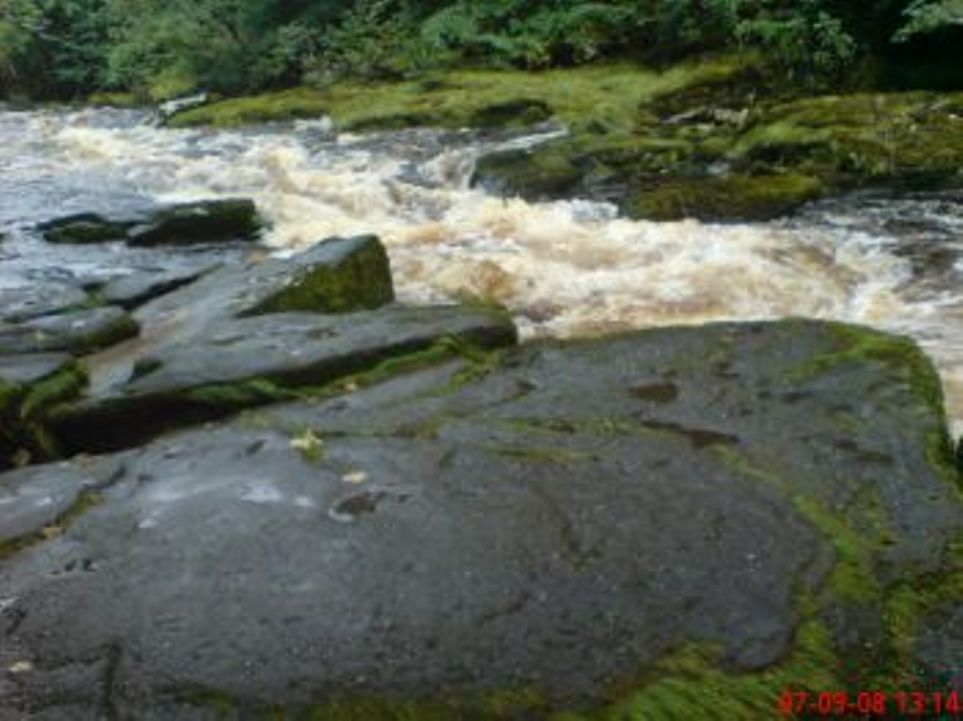
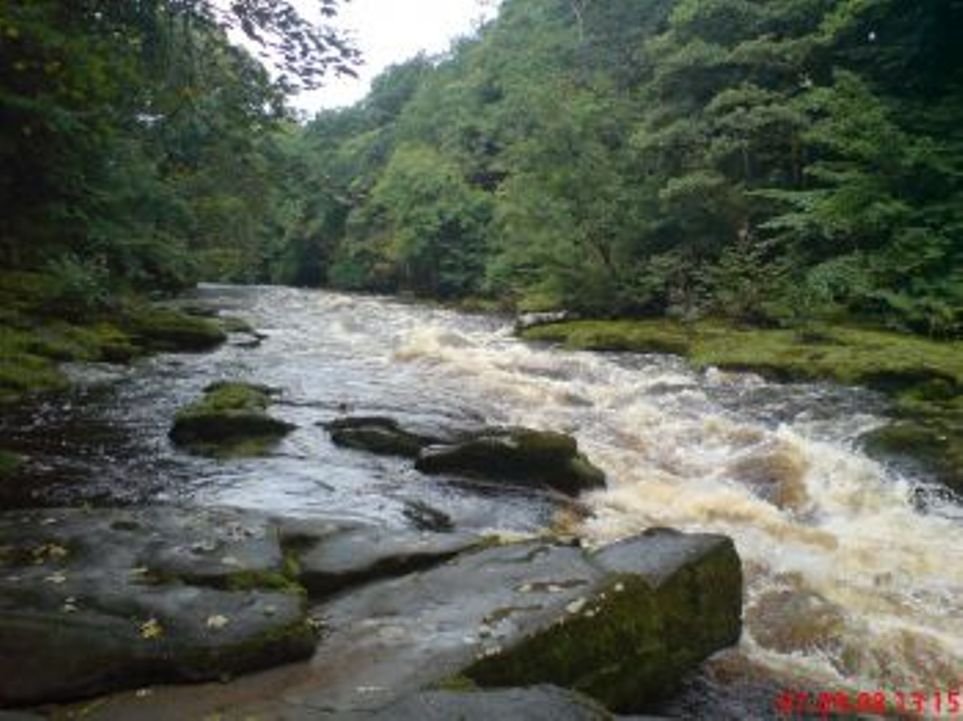
Leave a Reply